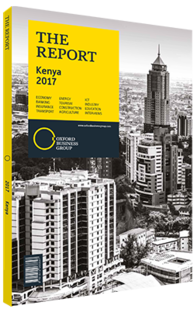Regional integration a focus for Kenya's government
As the largest economy in East Africa, Kenya has long played an important role in regional politics and trade deals. It is a founding member of both the EAC and the Common Market for Eastern and Southern Africa (COMESA) and, as such, has also been a key player in the negotiations forming the Tripartite Free Trade Area (TFTA). The latter was officially agreed upon in 2015, but needs to be ratified by national parliaments before it can go into effect, a process that is ongoing. Given that foreign trade plays an important and growing role in the Kenyan economy – total exports in the first four months of 2016 were up 16.4% on the same period in 2015 – the country should generally benefit from this push for greater economic cooperation on the continent (see Economy chapter).
Regional Integration
The EAC, which is based in Tanzania and was originally created in 1967 before being dissolved in 1977, has been the driving force behind regional integration since being reconstituted in 2000. Consisting of Burundi, Kenya, Rwanda, Tanzania, Uganda and South Sudan, the community is officially tasked with improving cooperation among member states in the political, economic and social spheres. In practice this has resulted in a focus on four pillars of integration: a Customs union that has been in force since 2005 and became fully-fledged in 2010; a common market that allows for the free movement of goods, people, labour, services and capital that went into effect in 2010; a monetary union that is in the process of being implemented following a 2013 protocol; and, eventually, a political federation. Regarding plans for a political federation, the process has been somewhat slow, with an office for the process being set up in 2006 and a number of consultations taking place since then.
The community is already one of the fastest-growing economic blocs in the world, and according to the IMF, real GDP growth averaged 6% between 2003 and 2013. The EAC also boasts a total population of more than 150m and a combined GDP of more than $146bn. Greater integration would allow for easier access for those looking to tap into the market’s enormous potential. The IMF agrees, stating in a 2013 press briefing that integration is “expected to help sustain strong economic growth and improve economic efficiency. A larger regional market will lead to economies of scale, lower transaction costs, increased competition and greater attractiveness as a destination for foreign direct investments.” The first steps have already been taken towards the monetary union, most notably with the 2014 launch of the East African Payment System, and should result in the introduction of a single currency by 2024. However, the political federation is still in its early stages, and with the debate having become more salient given the recent decision of Britain to exit the EU, it may be some time before it happens.
Recent Developments
The UK’s decision to leave the EU has also had a more immediate impact on the EAC, as Tanzania said that they no longer wanted to sign the economic partnership agreement between the EU and the EAC that was due to be finalised in July 2017. While it is unclear what will happen to the EPA as a result, Tanzania’s decision has injected a significant element of uncertainty. A more positive development for Kenya, however, has been that of the signing of the TFTA, which envisions a free trade area (FTA) made from three existing blocks: the EAC, COMESA and the Southern African Development Community. As a member of the first two organisations, Kenya would also be part of the larger group, which includes half of the states in the African Union. Once implemented – an agreement has been signed but must be approved by each member state – the TFTA would create a single FTA covering 26 countries across Eastern and Southern Africa, representing roughly 58% of the continent’s GDP, or $1.2trn.
You have reached the limit of premium articles you can view for free.
Choose from the options below to purchase print or digital editions of our Reports. You can also purchase a website subscription giving you unlimited access to all of our Reports online for 12 months.
If you have already purchased this Report or have a website subscription, please login to continue.

